- Details
- Category: Industry News
Hundreds of listeners tuned in on April 30 to What Are Transportation Regulators Doing to Respond to COVID-19?, a webinar hosted by International Association of Transportation Regulators (IATR) President Matt Daus of Windels Marx and sponsored by the association. The webinar, which ran for more than three hours, invited industry association leaders and regulators from some of the largest cities around the world in a conversation about how everyone involved in transportation—operators and the riding public alike—can manage and emerge from the crisis in an effective manner.
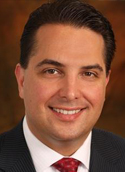 IATR President Matt Daus
IATR President Matt Daus
The all-star panel included Robert Alexander of the NLA, Peter Pantuso of the American Bus Association (ABA), and Tom Arrighi of The Transportation Alliance (TTA), as well as Jim Mullen of the FMCSA, Aloysee Heredia Jarmoszuk of the New York City Taxi and Limousine Commission, Jarvis Murray of the Los Angeles Department of Transportation, Rupal Bapat of the Chicago Department of Business Affairs and Consumer Protection, David Do of the D.C. Department of For-Hire Vehicles, Sylvain Tousignan of the Bureau du Taxi de Montreal, and Jaspal Singh of the International Association of Public Transport.
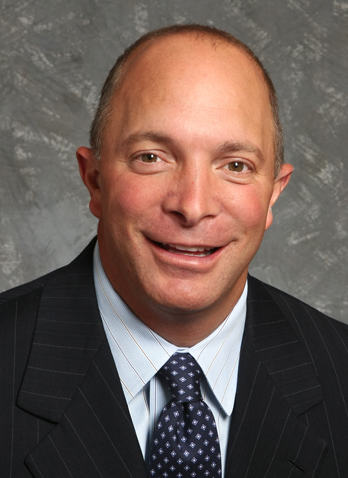 NLA President Robert Alexander
NLA President Robert Alexander
Daus gave the regulators on the forefront of crafting and enforcing policies, especially new COVID-19 policies, an opportunity to explain what was happening in their cities. Ridership is down for every facet of transportation—from taxis and chauffeured to rideshares to even bike and scooter programs. Since the pandemic is being fought on a state-by-state basis, regulators have the unenviable position of balancing the safety of their traveling public with the needs of transportation providers that have been financially wounded during the crisis. Many cities have deferred license fees or extended license renewals until the summer, and have been working with transportation partners to repurpose how vehicles are used. For example, Murray and Do mentioned food delivery services for seniors and low income residents in Los Angeles and D.C., respectively, while Chicago is subsidizing rides for disabled passengers up to $30 one way.
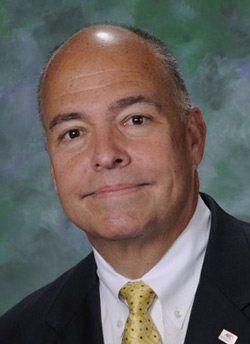 ABA President Peter Pantuso
ABA President Peter Pantuso
On the federal level, Mullen talked about the revised Hours of Service deferment, which is set to expire on May 15 and may be extended as needed. The FMCSA had also temporarily suspended the expiration of CDLs, primarily because DMVs in many states are closed, as well as updated its guidance on drug and alcohol testing. He notes that audits are still happened, although they are being done as carefully as possible and preferably off-site. Mullen also noted that, in conjunction with FEMA, a million of masks have been distributed to truck drivers across the country as they are deemed essential.
Pantuso offered a sobering look at the motorcoach industry, which is down more than 90 percent with its most profitable earning months in the spring and summer being impacted for 2020. ABA is asking Congress for $10 billion in grants and low-interest loans specific to the motorcoach industry, as he anticipates that the industry will be operating only at a 25 percent level by the end of the year.
Like Pantuso, Alexander is grateful for the Paycheck Protection Program (PPP) that offered small businesses forgivable loans to cover salaries and partial expenses for rent and utilities for eight weeks. However, both are frustrated that the program doesn’t quite work for the needs of the industry. Both hope that the forgiveness period will be extended through the end of the year, that the eight-week period can be customized for each business to offer some liquidity when travel resumes and demand for drivers returns, and that the ratio of forgivable funds be revised to perhaps 50/50 over the current 75/25 split to accommodate asset-heavy businesses that are currently seeing no revenue. Alexander also noted that furloughed drivers may be earning more on unemployment with the additional $600 weekly funds for four months.
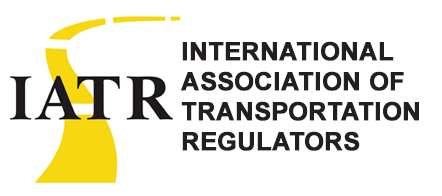
And with a slow rebound anticipated for the corporate travel and hospitality sectors, the association leadership offered their wish list for how they can get support from the local and federal government. Alexander and Arrighi asked that any new protocols for transportation providers be thoughtful for public safety and not spur of the moment—which often come at a high cost to companies. Both agreed that this might be a time for a common-sense approach to operations, such as eliminating the barriers to commerce within certain jurisdictions and reducing or waiving airport fees with the goal of encouraging the public to travel safely. All cities are reliant on travel and tourism, and everyone wants it to resume in a safe and healthy manner.
The full webinar is available here. For current updates, visit the IATR’s COVID-19 page at iatr.global/covid-19.
[05.04.20]
- Details
- Category: Industry News
The Transportation Alliance (TTA) announced on May 4 that Ira Goldstein, executive director of The Black Car Fund in New York City, has been named Executive of the Year.
 TTA's Executive of the Year Ira Goldstein
TTA's Executive of the Year Ira Goldstein
The association, formerly known as the Taxicab, Limousine & Paratransit Association (TLPA), highlighted Goldstein’s impressive legal background, having earned degrees from Touro College Jacob D. Fuchsberg Law Center and Fordham University School of Law. His expertise in banking, corporate, and finance law brought him to the transportation industry. In 2001, he joined the New York City Taxi and Limousine Commission, where he served as chief of staff for nine years.
In 2010, he accepted a position at The Black Car Fund. As executive director, Goldstein oversees workers’ compensation for over 80,000 independent black car and limousine drivers in the New York metropolitan area and about 125,000 drivers statewide. With Goldstein’s exceptional leadership, The Black Car Fund has implemented programs to streamline workers’ compensation and increase driver safety.
The Black Car Fund’s Wellness, Safety, and Education Program (STEP) offers affiliated drivers access to exclusive wellness seminars. Through the program’s four components, drivers can learn how to maintain a healthy lifestyle, physically and mentally. The first component provides instruction on proper nutrition, exercise, and stretching specifically designed for drivers. The second focuses on increasing awareness of cycling and pedestrian traffic through the Fund’s “Share the Road” program. The third and fourth components are a hands-only CPR training course and a session on how to respond to AMBER alerts. Drivers are paid $150 for participating the four-hour course.
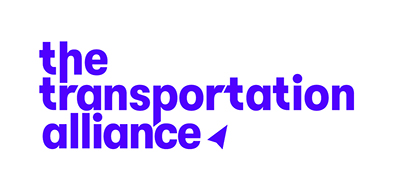
“We are thrilled to honor Ira Goldstein as our 2020 Executive of the Year,” said TTA President Tom Arrighi. “Ira is exceptionally innovative, and his efforts to promote the well-being and safety of drivers in our industry is commendable. He knows that drivers are a key part of a healthy industry and cannot be overlooked.”
Goldstein has been recognized for his work in the past. He was given the Simon Wiesenthal Center’s first annual 9/11 Commemoration Hero for Tolerance award, and the League of Mutual Taxi Owners’ “Man of the Year” award. He has also received an award for Corporate Social Responsibility in the Banking, Finance, and Insurance fields from City & State Reports, and a “50 Over 50” award from City & State New York as a prominent leader in government, business, and media.
Visit thetransportationalliance.org for more information.
[05.04.20]
- Details
- Category: Industry News
Social distancing and extra disinfection procedures are part of our foreseeable future, and as the country slowly reopens, the Centers for Disease Control and Prevention (CDC) has detailed a number of steps that business owners must to take to keep their teams and customers safe.
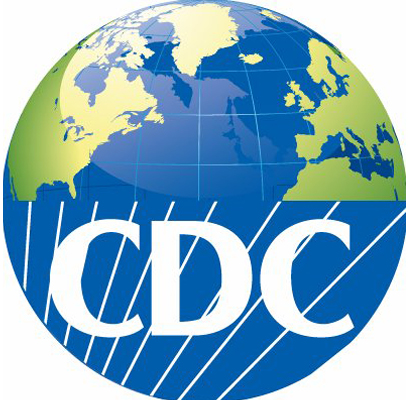
In vehicles
While the transportation industry has always been on the forefront of ensuring a safe, enjoyable experience for clients, these added precautions will only enhance the industry’s dedication to being a safe alternative to public transit and ridesharing options. Many operators have shared that they are adding partitions and reducing the number of people in vehicles, often using larger vehicles for fewer passengers to keep a safe distance. Obviously, the use of masks, hand washing whenever possible, reducing contact with passengers, offering hand sanitizing products, and completely cleaning vehicles in between runs with CDC-approved disinfectants are all parts of a safe protocol.
Additional guidelines for transportation providers
Additional guidelines for bus and motorcoach operators
In the office
It’s critical to maintain a safe working environment for your office staff. If your office has been unoccupied for seven or more days, the CDC recommends only the normal routine cleaning to reopen as COVID-19 has not been shown to survive on surfaces longer than this time.
However, additional procedures should be taken upon reopening. According these guidelines, most surfaces and objects in your office will just need normal routine cleaning. Frequently touched surfaces and objects like light switches and doorknobs will need to be cleaned and then disinfected to further reduce the risk of germs on surfaces and objects. Soft and porous materials, such as area rugs and seating, may be removed or stored to reduce the challenges with cleaning and disinfecting them. Work stations should be frequently cleaned and disinfected, and staff should always practice frequent handwashing. Don't forget about your maintaince area and break room.
CDC’s advice for reducing the risk of exposure:
- Coronaviruses on surfaces and objects naturally die within hours to days. Warmer temperatures and exposure to sunlight will reduce the time the virus survives on surfaces and objects.
- Normal routine cleaning with soap and water removes germs and dirt from surfaces. It lowers the risk of spreading COVID-19 infection.
- Disinfectants kill germs on surfaces. By killing germs on a surface after cleaning, you can further lower the risk of spreading infection. EPA-approved disinfectants (list here) are an important part of reducing the risk of exposure to COVID-19. Alternative disinfectants can be used (for example, 1/3 cup of bleach added to 1 gallon of water, or 70% alcohol solutions).
- Store and use disinfectants in a responsible and appropriate manner according to the label. Do not mix bleach or other cleaning and disinfection products together–this can cause fumes that may be very dangerous to breathe in. Keep all disinfectants out of the reach of children.
- Do not overuse or stockpile disinfectants or other supplies. This can result in shortages of appropriate products for others to use in critical situations.
- Always wear gloves appropriate for the chemicals being used when you are cleaning and disinfecting. Additional personal protective equipment (PPE) may be needed based on setting and product.
- Practice social distancing, wear facial coverings, and follow proper prevention hygiene, such as washing your hands frequently and using alcohol-based (at least 60% alcohol) hand sanitizer when soap and water are not available.
Most importantly, once a cleaning protocol has been written and implemented, it is imperative that is distributed to all employees and the proper training has been conducted so that they are following these health-saving procedures.
An in-depth guide can be found at cdc.gov/coronavirus/2019-ncov/community/reopen-guidance.html.
[05.01.20]

